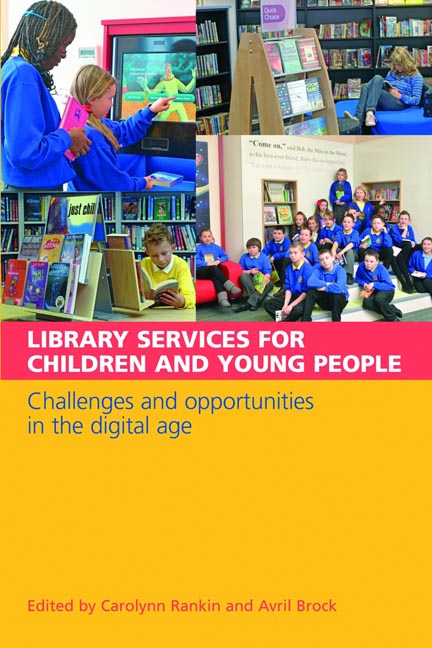Book contents
- Frontmatter
- Dedication
- Contents
- Contributors
- Foreword
- Acknowledgements
- Introduction and vision for the book
- Part 1 Children's library services – policy, people and partnerships
- Part 2 Connecting and engaging – reaching your audience and catching the latest wave
- 5 Libraries, literacy and popular culture – let's get reading!
- 6 Libraries, literacy and popular culture – what's cool to read?
- 7 Creative integration of information technology in the school library
- 8 Comics, manga and graphic novels – developing, selecting and promoting a core collection for teenagers and young people
- 9 Connecting and engaging with children and young people – the Australian public library perspective on outreach and marketing
- 10 Case study. Partnerships and library outreach in the National Year of Reading 2008
- Part 3 Buildings, design and spaces – libraries for children and young people
- Part 4 Issues for professional practice
- Index
7 - Creative integration of information technology in the school library
from Part 2 - Connecting and engaging – reaching your audience and catching the latest wave
Published online by Cambridge University Press: 08 June 2018
- Frontmatter
- Dedication
- Contents
- Contributors
- Foreword
- Acknowledgements
- Introduction and vision for the book
- Part 1 Children's library services – policy, people and partnerships
- Part 2 Connecting and engaging – reaching your audience and catching the latest wave
- 5 Libraries, literacy and popular culture – let's get reading!
- 6 Libraries, literacy and popular culture – what's cool to read?
- 7 Creative integration of information technology in the school library
- 8 Comics, manga and graphic novels – developing, selecting and promoting a core collection for teenagers and young people
- 9 Connecting and engaging with children and young people – the Australian public library perspective on outreach and marketing
- 10 Case study. Partnerships and library outreach in the National Year of Reading 2008
- Part 3 Buildings, design and spaces – libraries for children and young people
- Part 4 Issues for professional practice
- Index
Summary
Introduction
Teaching and learning are in an era of rapid change, driven by political policymakers and fuelled by the impact of information and communication technologies (ICTs), both in the home and at school. The potential to empower learning and track student and school progress has never been greater. If the school library is to support effective learning and teaching, then exploring the communication abilities of new technologies is certainly part of the librarian's raison d’être. This chapter will emphasize a strategic approach to integrating technologies, in order to give the school library a strong educational identity, and will look at what this means for student learning.
In the UK, education is populated by a diverse number of institutions, ranging from those that are state run or independent, to those that have academy status and those that are secular or centred on a faith, to name a few. In some areas, students move from a primary to a secondary school, while in others, they experience a middle school system. Some schools offer continuity of environment from the age of three until 18. All are unique. Equally, the level of information technology available, and the way that it is integrated into the life of a school, is varied. Competition between institutions lends a strong impetus in the drive to develop these assets. Critical within this drive is the role of the library staff to think strategically and operate educationally. The challenge is to use our professional expertise within a specific school culture, in order to create the library service that delivers the particular school's needs.
A strategic approach
It is very easy to say that the core business of any school is learning, teaching and attainment. The reality is a complex network of priorities. How we respond to these, in our leadership of reader development, information literacy, staff development and school management, is crucial for the future longevity of the library. Currently, in the UK, a school library exists at the discretion of the head teacher and so its relationship with this leader's vision is critical to its success. We know that one of the main sources of information, upon which head teachers base their judgements, is their own observation (Everhart 2006). The availability of technology enables us to innovate and to make visible what we do, taking this to the next level and, thus, proving its relevance.
- Type
- Chapter
- Information
- Library Services for Children and Young PeopleChallenges and opportunities in the digital age, pp. 109 - 118Publisher: FacetPrint publication year: 2012



